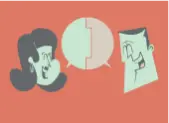- leadership
- Blog post
Coaching: Helping managers cope with the games employees play
Ask 10 line managers if they believe in coaching as a way to improve employee performance and behavior, and you’ll probably get 10 “yes” answers.
Some of these managers – the more experienced, skillful ones – will likely know how to go about it.
But do your managers know what to do when employees refuse to play the coaching game – or rather, play their own games in an effort to wiggle out of being coached?
Evasive action
We’re not saying employees are devious by nature. But even when a manager approaches a coaching session with constructive intent, some people will feel they’re being scolded, manipulated, or otherwise disrespected – and take evasive action.
Sometimes even an experienced manager may not know how to cope with these diversionary tactics. But HR can help, by training managers to recognize the ways employees resist coaching, and giving them tools to keep the coaching session on track.
Coaching expert Marie McIntyre lists six common diversionary tactics, along with suggestions for foiling them:
1. Accusations
Suppose a manager is trying to coach an employee whose behavioral problems were reported by co-workers. The employee may lash out at the message bearers: “Who said that about me? Somebody’s trying to get me in trouble and I have a right to know who.”
Of course, it doesn’t matter who reported the behavior, as long as the reports are accurate.
The manager could respond: “It’s natural for you to wonder about the source of this information. But I keep my talks with others confidential, as I do my talks with you. Let’s focus on the issue, not who said what.”
2. Phony comparisons
Another common employee ploy is to point out others who supposedly have the same problem – only worse: “Ed has a higher error rate than me. He’s the one you should be talking to.”
To get over this hurdle, the manager could say: “If there’s an issue with Ed, I’ll talk with Ed. But right now we need to stay focused on your error rate and what’s been causing it.”
3. Short-circuiting
The employee will often have a good idea what the session is about, and try to pre-empt it. Like so: “You don’t have to tell me. I already know what you’re going to say. I’ve made a few mistakes lately but I promise that’s going to stop.”
The manager shouldn’t let that end the coaching session. There’s much more that needs to be said, and done.
The manager can try this: “It’s great you realize there’s a problem, because that will make it easier to solve. But I need to make sure you’re very clear on my view of the situation and my expectations.”
4. Denial
Even if employees know very well what they’ve done, they may deny it, hoping the manager will back down: “It’s not true that I talk inappropriately about my personal life. I hardly ever bring it up.”
The manager could respond: “If you don’t, we have no problem. But I’ve gotten some feedback that’s different. We need to talk about that.”
5. Minimizing
The employee may feel that the facts are too clear to deny – but he can try to minimize them: “Sure, I don’t follow standard procedures. But why does it matter? I always get the work done.”
Here, the manager could try something like this: “I know you consistently complete your work. But has it occurred to you that the standard procedures are safer/less costly? Let’s discuss that.”
6. Deflecting blame
The employee may admit there’s a problem, but claim she’s not at fault: “These arguments you talk about, I’m never the one who starts them. It’s usually Jane or Deb.”
The manager’s possible response: “I’m really not concerned with who starts anything. I want to see whether there’s something you can do to help us avoid these arguments in the future.”

Get a demo of all our training features
Connect with an expert for a one-on-one demonstration of how Rapid Learning can help develop your team.



